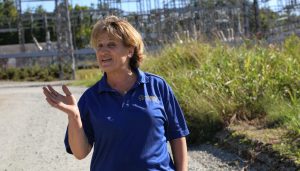More than 1,900 shooting incidents have taken place in Durham since the start of 2020.
They’ve left more than 650 wounded and nearly 90 dead.
“Folks are asking for help,” said council member Leonardo Williams at last week’s Durham City Council meeting. “They’re saying, ‘Just do something more, please.’”
That “something more” may be ShotSpotter, a controversial gunfire detection system that the council blocked in June 2019 and September 2020. Now, the council is one step closer to setting aside $197,500 for a year-long pilot of ShotSpotter.
A majority of the council voted last month to move forward with a budget for the 2022-23 fiscal year that would include money for ShotSpotter. The council must vote on the budget before June 30, but during public comment at a council meeting last week, several Durhamites showed up — either in person or via Zoom — to oppose funding for the technology.
ShotSpotter uses microphones placed around a city. When the microphones sense gunfire, police are notified and dispatched. By improving police response times and sending officers to scenes that might otherwise go unreported, ShotSpotter could save lives, proponents say.
Mayor Pro Tem Mark-Anthony Middleton, arguably the council’s most ardent supporter of ShotSpotter, said that last year in Wilmington, two police officers received awards for saving lives after responding to ShotSpotter alerts. (Only one incident involved gunfire; in the other, someone had sustained injuries breaking a window.)
“This is about when someone needs help,” Middleton said. If someone is hurt, even “in the middle of the night, someone will come and see about you.”
But does ShotSpotter work? The MacArthur Justice Center found that in Chicago, 88.7% of ShotSpotter alerts were “dead ends” — incidents in which no gun was actually involved.
“What ShotSpotter is effective at is manufacturing consent for increased policing,” council member Jillian Johnson said in an interview. “It increases the number of times that police are called.”
Naana Ewool, who is involved with Durham Beyond Policing, a coalition that advocates for “community-led safety and wellness,” says most cities place microphones only in small areas…or in certain neighborhoods. “And those neighborhoods are often the ones that are majority Black and brown, with a higher number of folks being criminalized.”
“Police who arrive on the scene often escalate situations and introduce violence, so folks are more likely to get injured or killed,” Ewool said. “There’s public health research that shows that regardless of the type of interaction, the more interaction folks have with police, the worse their health outcomes are.”
Danette Wilkins, a health professional and resident of Durham’s Cleveland-Holloway community who works for Johns Hopkins University, implored the council to reject ShotSpotter. She cited a report by the City of Chicago that says “the very presence of this technology is changing the way Chicago Police Department members interact with members of Chicago’s communities.”
Opponents think the $197,500 would be better spent elsewhere.
In general, “we need gun control, we need housing guarantees, we need a living wage,” Johnson said. “That’s how you end gun violence.”
Johnson said the city can “invest as much as we can into prevention and intervention techniques,” like the violence intervention program Bull City United and the We Are The Ones Fund.
Middleton says these reforms and ShotSpotter are not mutually exclusive: “I think the people reject the zero-sum game. It’s not either/or.”
He resisted comparisons to Chicago and Charlotte, which canceled its contract with ShotSpotter in 2016. “I have to govern based on data from Durham,” he said. “But we don’t have that, and so I really want this to be a pilot in the truest sense.”
In an interview, Ralph A. Clark, president and CEO of ShotSpotter, said the technology bridges “a fairly significant public safety gap.” He pointed out that “80 to 90 percent of gun fired events go unreported. So that means guns are fired, there’s no call to 911, which means there is no police response.”
In Oakland, California, Clark said, ShotSpotter technology has saved more than 100 gunshot wound victims. The company also says its sensors detection rate is 97%.
Clark added: “It’s very confusing to me to see people have a negative reaction to the idea that police are able to respond to incidents of gunfire.”
Williams agreed. “Give us a chance to try this,” he said. “If it works, it works. If it doesn’t, we’re going to try something else.”
Council member Javiera Caballero, who would prefer that the city fund other violence-reduction efforts, says officials will have six months to collect the data about the gunfire detection technology. After that, the city has to pay for ShotSpotter.
She doesn’t think Durhamites have had enough of a chance to hear about the technology, but she expects it to be funded when the council votes on the budget.
Opponents want the city to keep searching for solutions.
“Communities are dealing with so much grief and so much fear because of gun violence,” Ewool said. “Just offering them something—anything—isn’t fair. People deserve things that are going to provide real solutions and real healing.”


